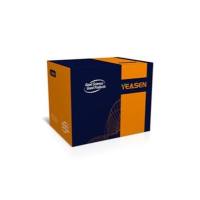Many bacterial genes are regulated in an environment-responsive fashion, and from the perspective of a pathogen, the host represents just another environment. Many genes that contribute to virulence are differentially expressed in response to host environments that they encounter during colonization and invasion (
1
). Recognition of this has led to the development of selection or reporter systems that utilize the increased activity of promoters during growth in vivo to identify genes that are selectively expressed during infection, and, thus, may contribute to the infection process (
2
–
5
). One of these techniques, differential fluorescence induction (
2
,
3
), involves the use of a promoter-probe plasmid that utilizes a variant of green fluorescent protein (GFP) as its reporter. The technique has been used successfully to identify novel
Salmonella typhimurium
genes that are selectively expressed following exposure to acid environments (
3
) and during infection of macrophages (
2
). GFP reporter systems have also been used to evaluate in vivo gene expression in other organisms including
Staphylococcus aureus
(
6
),
Listeria monocytogenes
(
7
), and
Mycobacterium marinum
(
8
). This chapter describes the use of the GFP-promoter-probe plasmid, pJSK411, which is suitable for the evaluation of differential gene expression in
Neisseria meningitidis
(Fig.1 ).
Fig. 1.
Map of pJSK411 demonstrating restriction sites within the multiple cloning site. The binding site for the 401 US primer overlies the
XhoI
site and the 41 1DS primer binding site lies within the coding region of GFPmut3.






